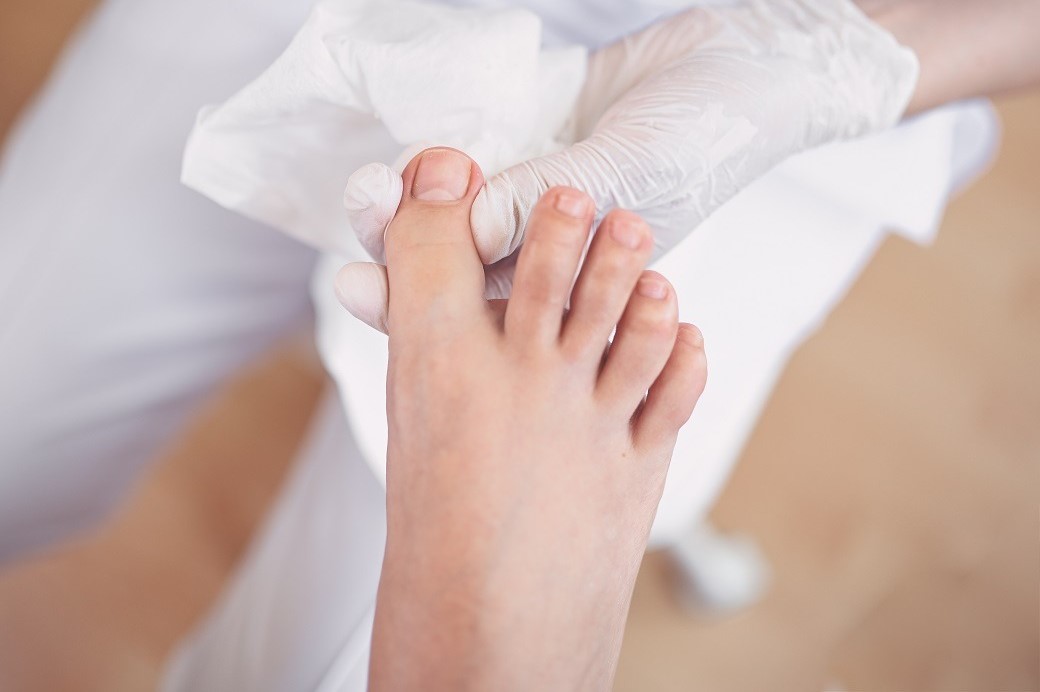
Onychocryptosis: what it is and how to deal with an ingrown toenail
Onychocryptosis is a disorder known as ‘ingrown toenail’: this condition, sometimes painful and unsightly, occurs when the corner of the toenail creeps into the skin
It causes pain, redness and inflammation of the affected area.
If left untreated, onychocryptosis can cause foot infections and, in severe cases, even lead to the formation of an abscess.
Onychocryptosis: what is it?
If the corner of the toenail becomes embedded in the skin, onychocryptosis results.
This is a fairly common problem that mainly affects adults between the ages of 20 and 30.
Ingrown nails are very rare in infants and children who possess less thick and hard nails.
The growth of the nail plate in the skin of the nail groove initially causes only mild discomfort, but over time can cause pain and inflammation.
Onychocryptosis: the causes
Onychocryptosis occurs when the nail bed is too small to accommodate the nail plate, which pushes down, causing pain.
The outer corner of the nail then grows abnormally and can pierce the skin, causing even serious infections.
The way the nails are cut plays a key role.
If they are torn, cut crookedly or too short, they tend to grow back laterally, leading to onychocryptosis.
Risk factors for this condition include congenital deformities or continuous trauma to the foot, long toes and excessive sweating in the area.
The development of this condition is also favoured by diseases such as diabetes, arthritis and obesity.
Finally, it is important to pay attention to posture, wearing shoes that are too tight and fungal infections such as onychomycosis.
Onychocryptosis: symptoms
Among the first symptoms of onychocryptosis is pain, accompanied by localised swelling, discomfort and redness.
Often fluid-filled blisters form in the area around the nail, which can burst and give off a bad smell.
The inflammation caused by the disorder causes the skin to thicken, also leading to lesions.
The pain that is caused by onychocryptosis is accentuated when wearing shoes that are too tight.
Sometimes the discomfort is so strong and intense that any contact of the finger with anything is unbearable.
Onychocryptosis: complications
Onychocryptosis has numerous complications. If it is not treated properly, it can cause local infections.
The inflammation can spread to neighbouring tissues, causing abscesses and, in severe cases, osteomyelitis, an infection of the bone at the affected finger.
In individuals suffering from diabetes, onychocryptosis can cause serious infections due to an already compromised blood circulation.
Onychocryptosis: the diagnosis
When one feels the first symptoms of ingrown toenail, it is important to visit a podiatrist, who, after a thorough examination, will decide how to act, setting up a specific treatment.
Specifically, it is essential to visit a specialist if the symptoms persist, if you suffer from a foot disease or have diabetes.
In any case, it is always better not to underestimate onychocryptosis and hope that the problem will resolve itself with time.
Do-it-yourself remedies are also discouraged because they could worsen the infection.
Onychocryptosis: treatment
The treatment of onychocryptosis depends on the symptoms and the severity of the condition.
If the problem is superficial, the patient may undergo conservative treatment with warm water foot baths and the application of an antibacterial.
An alternative is elastic bandaging to reduce symptoms
The treatment involves stretching the skin of the finger towards the ingrown toenail and then wrapping the area with a plaster.
This can reduce pressure and promote drainage of the pus.
If the nail grows deep, causing infection and pain, an operation to extract the nail plate is essential.
The operation is performed under local anaesthesia, after which the patient is given a local antibiotic treatment to be followed over the next 7-15 days.
Read Also
Emergency Live Even More…Live: Download The New Free App Of Your Newspaper For IOS And Android
Onychophagia: My Child Bites His Nails, What To Do?
Mycosis: Causes, Symptoms, Diagnosis And Treatment
Onychomycosis: Why Do Fingernails And Toenails Get Fungus?
Nail Melanoma: Prevention And Early Diagnosis
Ingrown Toenail: What Are The Remedies?
What Is ‘Hand Foot And Mouth’ Disease And How To Recognise It
Dracunculiasis: Transmission, Diagnosis And Treatment Of ‘Guinea-Worm Disease’
Parasitoses And Zoonoses: Echinococcosis And Cystic Hydatidosis
Trichinosis: What It Is, Symptoms, Treatment And How To Prevent Trichinella Infestation
Toxoplasmosis: What Are The Symptoms And How Transmission Occurs
Toxoplasmosis, The Protozoan Enemy Of Pregnancies
Dermatomycosis: An Overview Of Skin Mycoses


